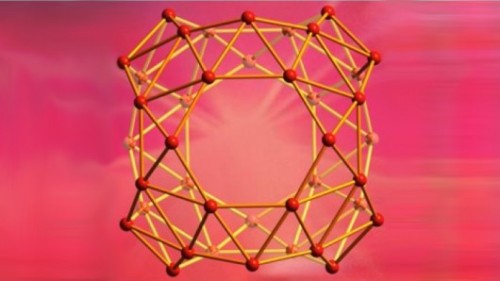Boron and Buckyballs
Recent news from the world of chemistry: the result is really the experimental observation of a special new molecule. People call it a “Boron Buckyball”, but this irritates me since we know that the buckyball is a specific fullerene on 60 vertices. In particular, it is the smallest fullerene that satisfies the independent pentagon rule. This new Boron molecule is called “Borospherene” and is quite interesting in its own right, as seen below:
The structure is very interesting when you consider it as a spherically-embedded (i.e. planar) graph: there are many triangular faces which create a cube-like structure, two of the faces of this cube are 6-faces, and the other four are 7-faces! These interesting heptagonal structures are particularly interesting. In the figure above, it appears to be a unit-distance embedding, and this creates a rotation in the opposing 6-faces.
Let’s dig more into the structure of this object, but also into the computational part of the experiment.
Read the rest of this entry »
